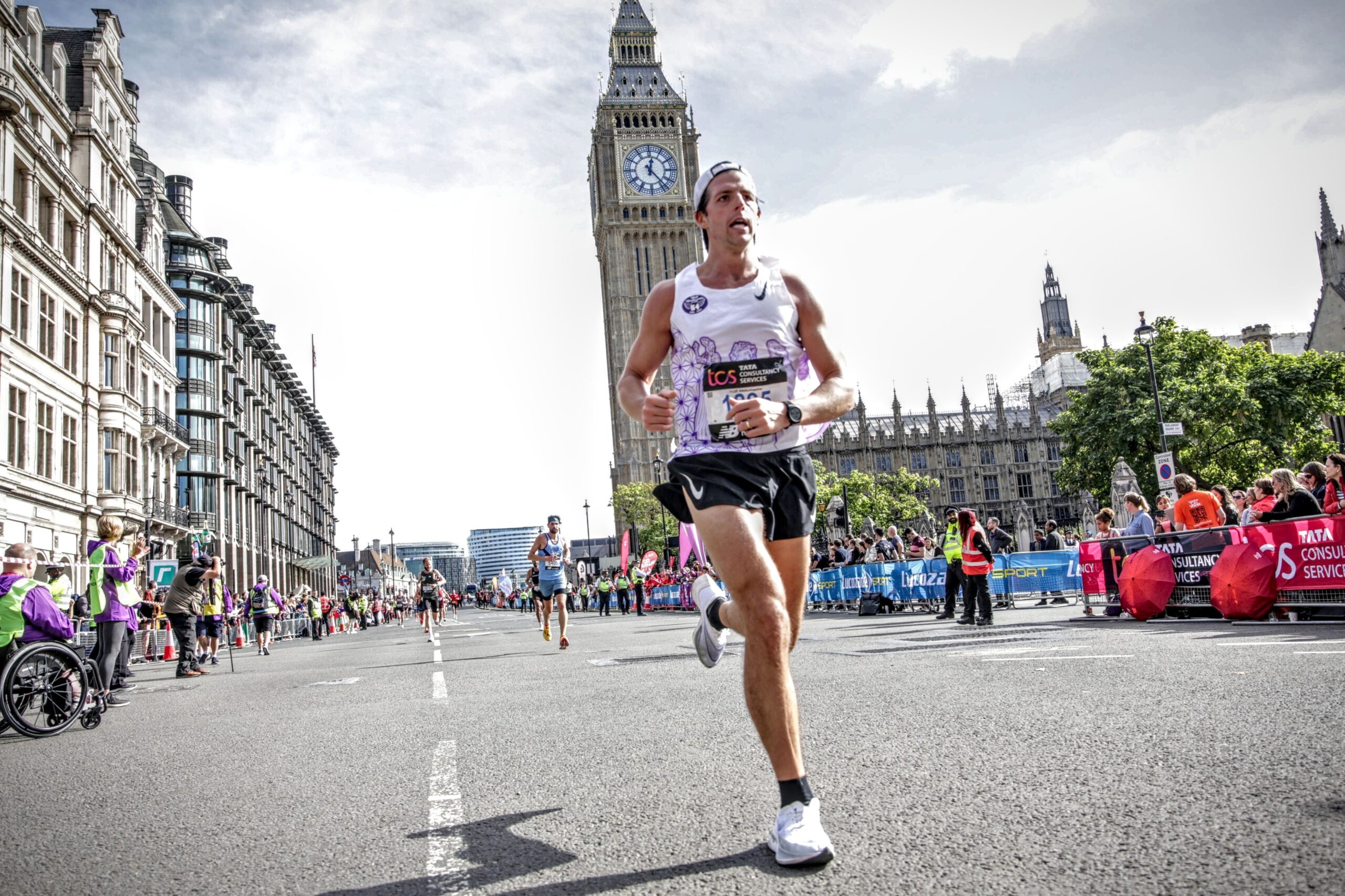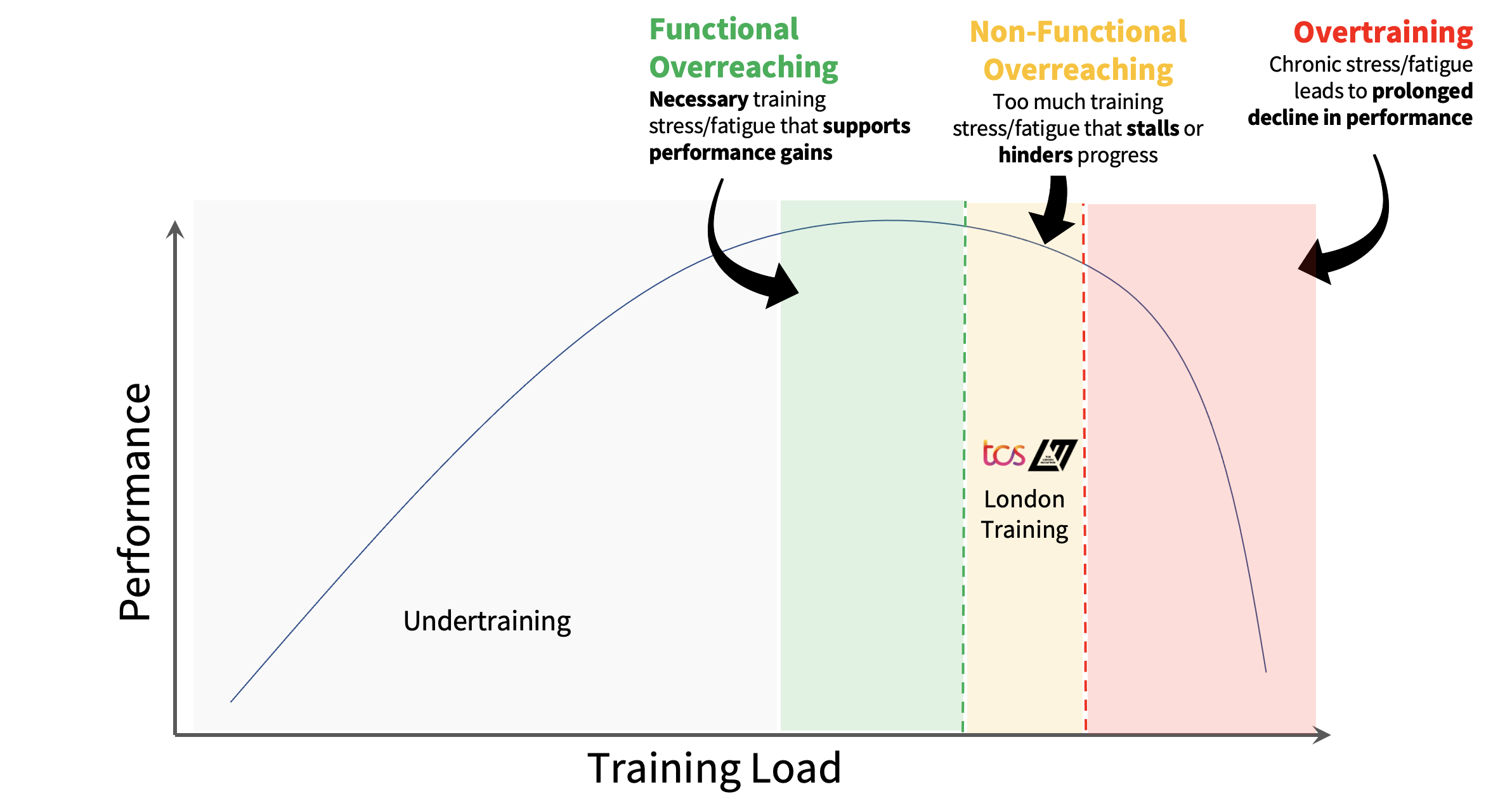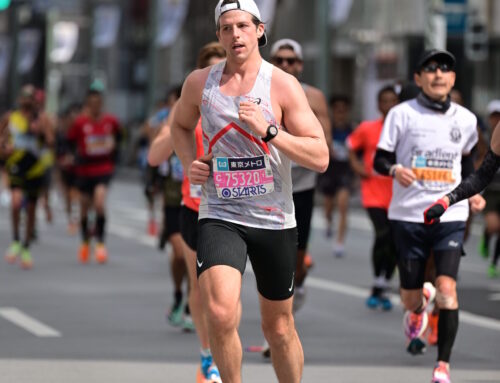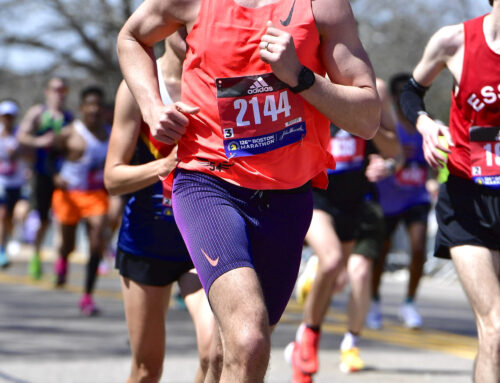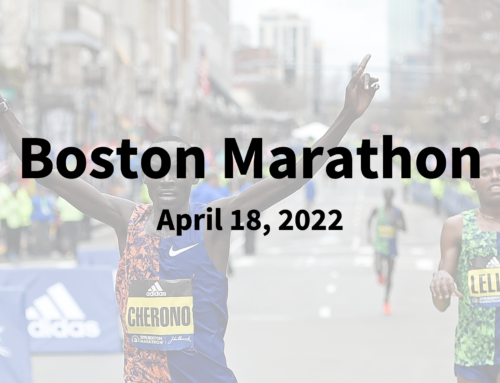On April 18th, I ran my 4th major marathon — the London Marathon. Although this was my fastest race, it was my worst performance. Below is the summary of my training, assessment of the race, and my plans for what’s next.
Coming off hilly Boston with 2:46…I set the bar high for flat London aiming for 2:42-2:43…
Stepping off the plane welcomed by the crisp cool London Air, I felt confident, hungry, and determined to run a 2:42–2:43 marathon, which meant shaving 3–4 minutes off my Boston Marathon time. London’s pancake flat course, perfect weather, iconic sightings, and tremendous crowd energy only gave me more confidence that I could achieve my goal.

London Marathon Training — A Hot and Humid Cycle…
In stark contrast to training for Boston, training for a fall marathon in NYC is a torture test of enduring runs through summer’s extreme heat and humidity. The sweat-drenched clothes piled up from daily runs left my hamper heavy and smelly, much to my wife’s dismay.

From July to October, I put in over 1,000 training miles including 2x a day runs, bi-weekly speed workouts, and six 20+ mile long runs. Building off a strong performance at the Boston Marathon, I pushed my training to get comfortable at a low 6 min pace. Most running was focused on flat terrain as opposed to training for Boston which centered around bridges and hills.
Building off a strong Boston Marathon my training focused on getting comfortable at a low 6 min pace.
I ran the Rockaway End of Summer Half Marathon one month before London to bank confidence. However, the weather conditions were hot and humid, resulting in less focus on time and more on finishing. I took 3rd place overall amongst 200 runners. The fact that I stuck it out during the heat while so many runners just called it was reassuring.
Meg’s Wedding Weekend + Weak Long Run
On September 11th, I ran my last long run of 21 miles. The last run before the race is key because it is a good gauge of performance and serves as a confidence booster as you head into tapering. Unfortunately, my last run fell on my sister’s wedding weekend, which posed a few challenges – not an ideal location to run, I was not recovered, and I had no water to hydrate during a grueling 21 mile run.
Two Weeks Out Taper — Legs Felt Tired
With the marathon two weeks away, I pivoted to tapering, which is the act of reducing the volume of running to allow my legs to recover and perform at peak levels in London. I ran on Tuesday and Wednesday and oddly enough, my legs felt super heavy. The easy run was a struggle. I emailed my coach and we decided to take a day or two of rest.

Flight to London
My beautiful wife (who might I add is six months pregnant!), Lindsay and I flew to London on Thursday morning, September 27th. The next morning, we met a friend for coffee, went to the expo to pick up my bib, and came back to the hotel to relax and catch up on some work. We heard a knock at the door. I opened the door to a hotel staff member who said he had a letter for me. He stepped back and my brother-in-law and sister-in-law popped into our room. I was in complete shock and overcome with excitement! They flew over 11 hours from Los Angeles and surprised us! Their presence raised the level of excitement for the weekend.

RACE DAY — Lucky — No Rain!
I woke up at 4:45 am and hit the gym rolling my glutes and legs to the motivating sounds of Eminem. I checked the weather app and was surprised to see there was no rain in the forecast and the temperature was in the 50s. I geared up and took the Elizabeth line to the starting gate.
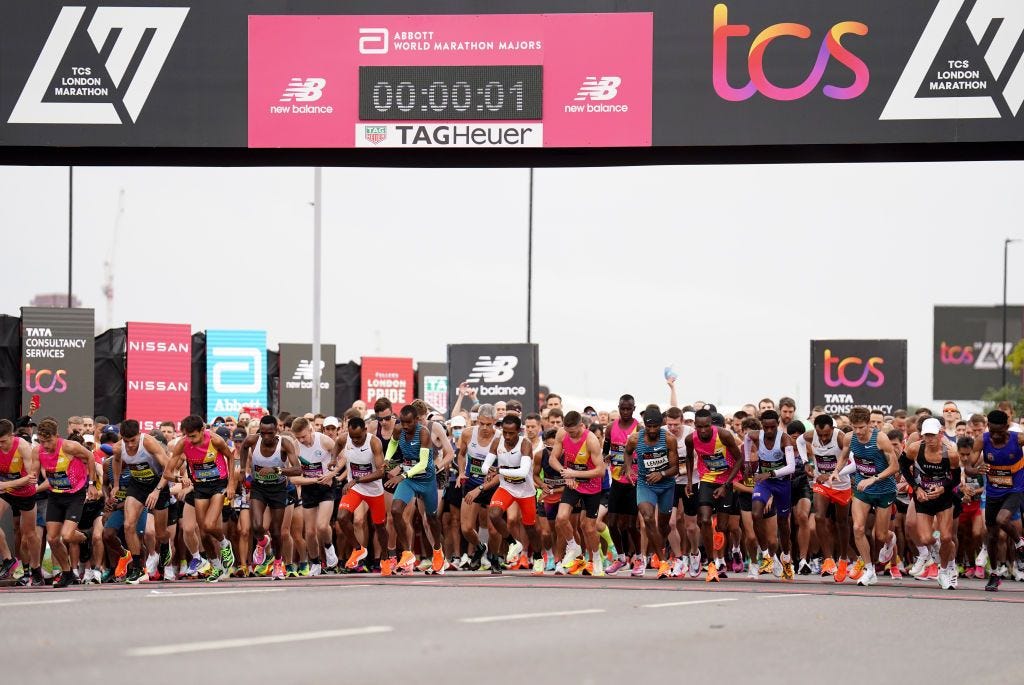
Miles 1–3: Excitement Builds
Over 40,000 runners lined up at the starting line on Oct 2nd. As with most marathon starts, adrenaline hits hard in the beginning, and effort was needed to contain and not get over excited. I repeatedly looked at my watch to check my pace. The time fluctuated from 6:10 and 5:55. I pulled back my pace to stay on track. My attention tuned into avoiding potholes and rolling my ankle.
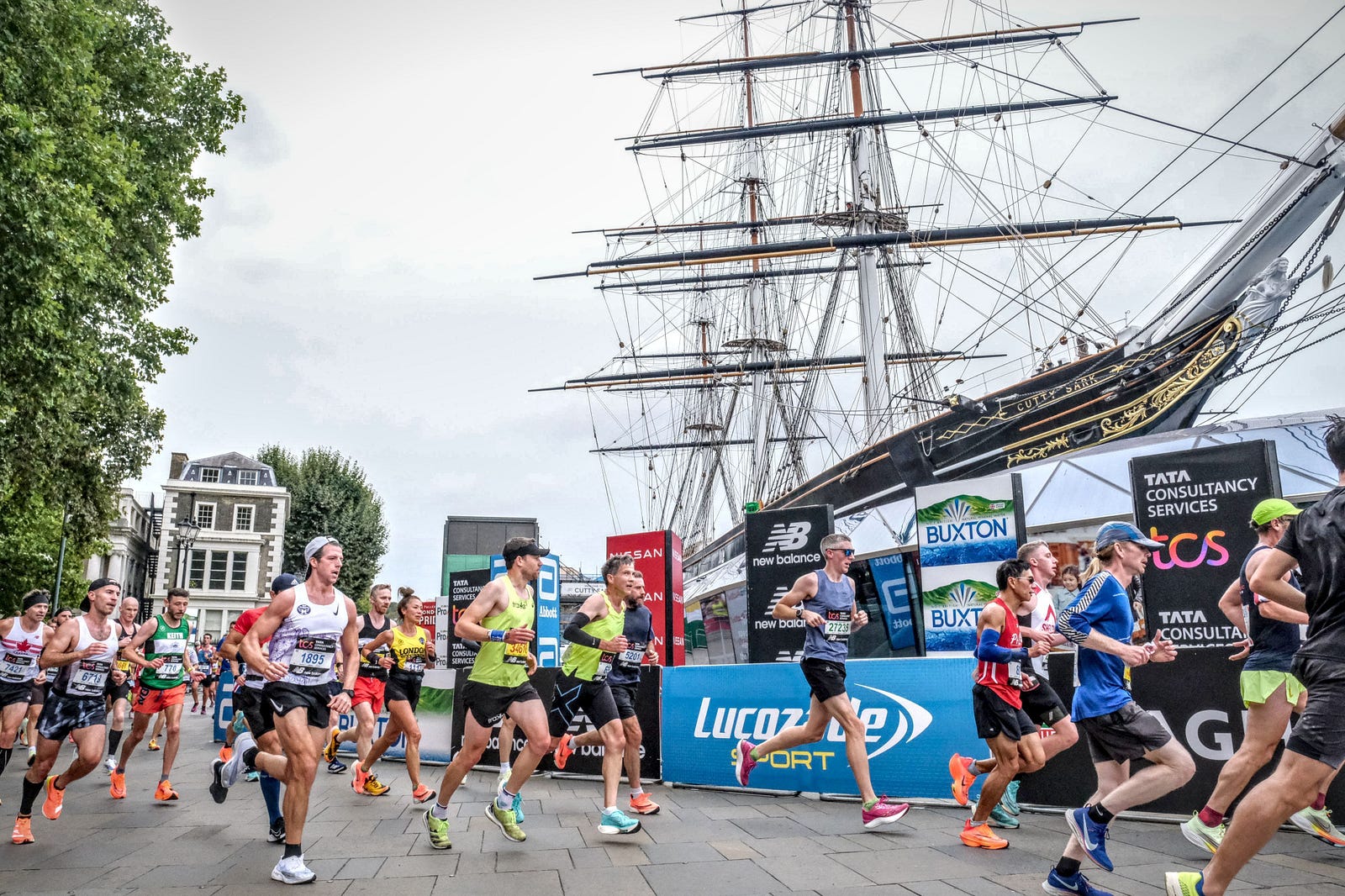
Mile 6–9: Cutty Sark
I approached mile 6 greeted by the Cutty Sark, a historic ship, where the roads narrowed but the crowds amplified. I settled into a 6:10 pace and concentrated on getting to the halfway point at 1:21:30. “JASON” “JASON”, screamed a voice. I turned my gaze to the sound of my name and saw my wife, Griffy, and Taylor. Seeing family at this point put a smile on my face.
Mile 12–14: The Unforgettable Tower Bridge
I took the right-hand turn to see Tower bridge. Running across Tower bridge is what I would imagine it may be like walking down the red carpet at the Grammys. I absorbed the crowds’ energy and pushed strong. After the bridge, I slowed my pace and started to think of the race ahead. I hit the half marathon mark at 1:21:30 – my planned time and started to assess how I felt. This race felt more like Berlin than Boston.

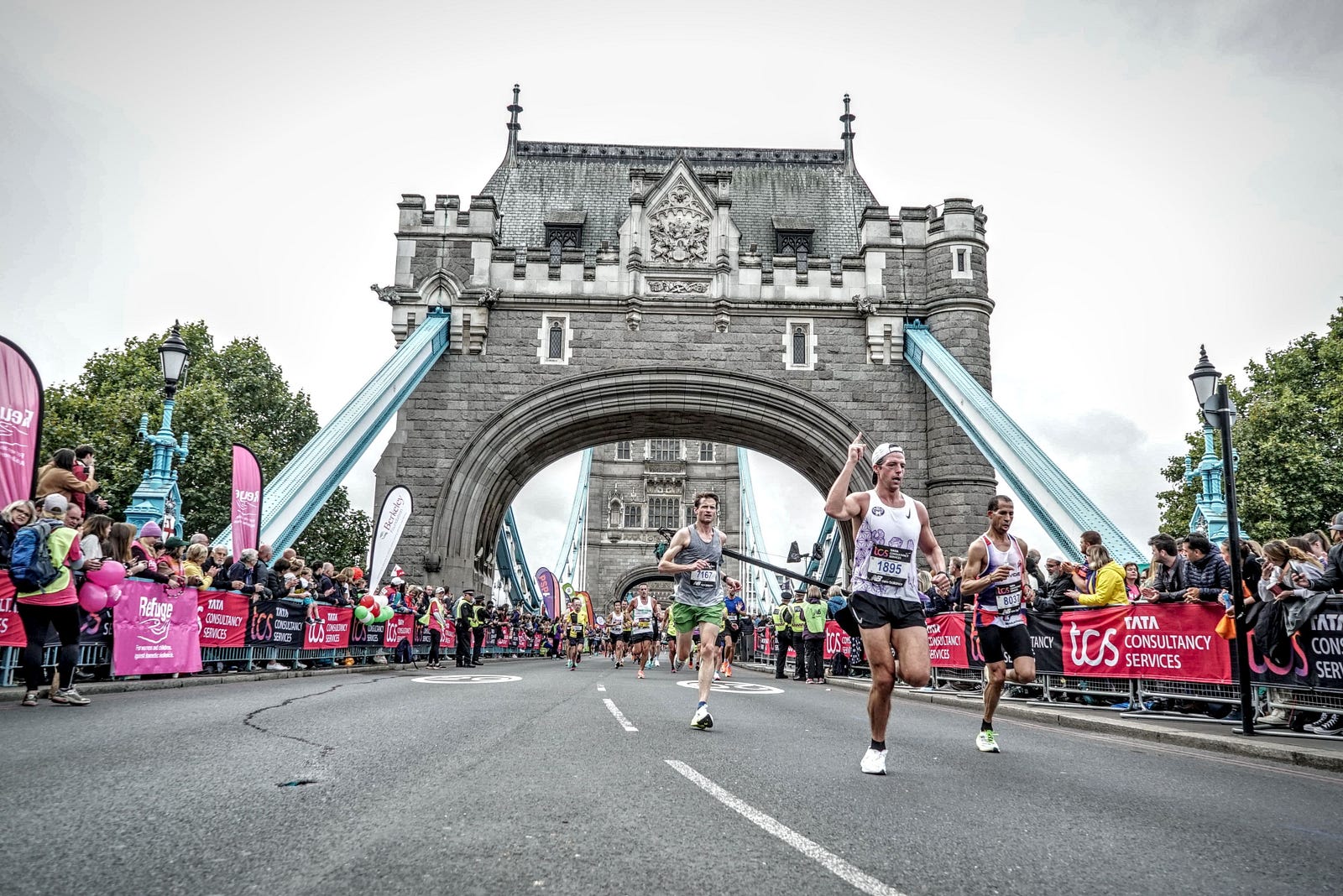 Mile 18–19: Legs Felt Heavy, but the Race Just Started
Mile 18–19: Legs Felt Heavy, but the Race Just Started
I took my last gel and calibrated my pace with my watch. My legs were having trouble sticking to the 6:13 pace. Admittedly, I lost some steam and when my pace started to deviate from the plan, my mind entered a dark place. Although my mind said to keep pushing, my legs were not aligned. I locked into a pack of runners and moved closer to the group to use them to pull me through the remaining miles.
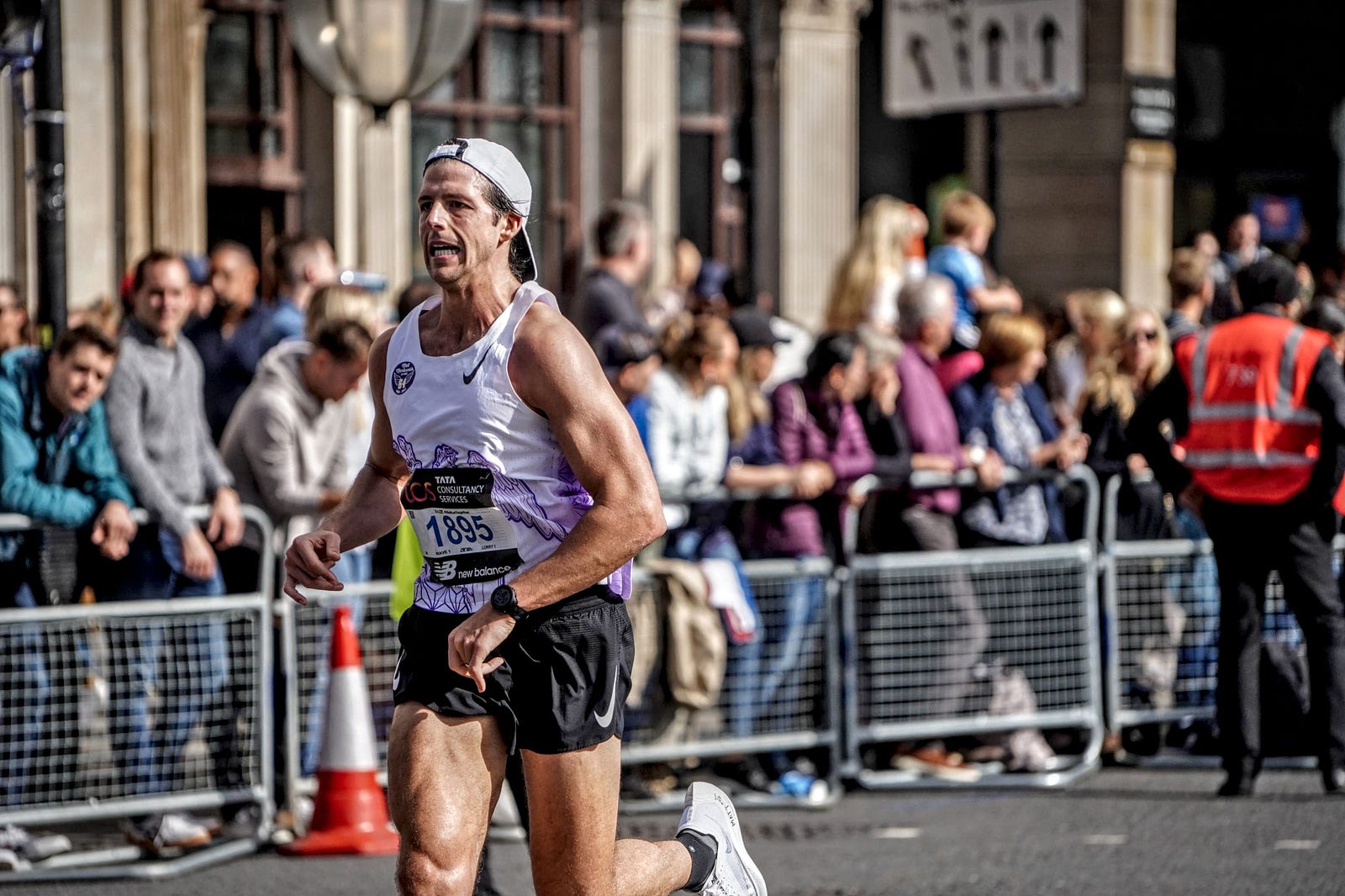
Mile 20: Finding a Rhythm and Getting a Family Boost
“Jason — this is what you trained for” I kept repeating to myself. I locked into a rhythm and switched my watch to clock mode to avoid looking at my pace. I reached my hand to wipe the sweat off my face but couldn’t bend my arms due to a cramp. At this stage, my body felt a bit vulnerable to cramping or hamstring seizing up, so I tried to not rock the ship and avoid a blowup.

Seeing Lindsay, Griffy, and Taylor again at this late stage of the marathon helped me dig deeper to push out the doubt that was seeping into my mind. It reinforced why I was running.
At mile 20 my mind pulled in opposite directions… 1) thoughts about my foot is irritating me, arms cramped, legs tired, and 2) thoughts about why I run, the training I put in, and the obstacles I overcame, telling myself “This is your race” “This is what you trained for” and envisioning the finishing line.
Mile 22–24: Quick Mental Math to Finish Not Looking Good…
The service engine light was on — brake pads need replacing, and the oil needs to be changed. Lights were flashing red, noises beeping, and red flags were popping up. My mind gravitated toward appealing reasons to shut down and protect my body. I turned my watch to clock mode again to avoid looking at my pace.
I did quick mental math at Mile 24 based on my projected finish time and it was not looking good. I knew I was close to sub 2:45 if I could speed up my pace. I pulled out all the last energy but felt like a car speeding up that had no more gas left in it. I knew I was not going to hit any time I was expecting but quitting is not in my DNA.

FINISH TIME: 2:45:28 — I Missed the Mark…
On the surface my race time seems good. It is a personal best and is in the top 1–3% depending on whom I compare it to. But there are always ways to slice and dice results to convince myself that it was a “good performance”…
London Performance:
- Personal Best — 2:45:28
- Category Rank — Top 3% — Placed 324 out of 10,352
- Overall Rank — Top 1% — Placed 555 out of 40,000
Some say I am too hard on myself, but in reality, this marathon simply boils down to the race I planned to run “GOAL” and the time I actually ran. By that definition, it was a miss.

OK…Not a Good Race — What Went Wrong?
Looking at my performance relative to Boston (yellow line) which was run six months before is a good starting place. The green line indicates my London pace, making it obvious that I fell apart over the last 10K.

This is quite surprising because London’s course is pancake flat compared to Boston which has four large hills toward the end. Despite the hills, I ran Boston 10–15 sec/mile faster through the last 10k.

The Problem – Non-Functional Overreaching…Too Much Stress Not Enough Recovery
-
Non-Functional Overreaching: Improved running performance is a balancing acting between progressively overloading the body followed by periods of adaption. Not enough overload — no performance gains. Not enough recovery and adaptation — decrements in performance. I think this was my biggest issue. My legs were cooked 2 weeks out (non-functional overreaching) during a crucial and limited time to recover. While I “felt” good before the race, I believe the metabolic consequences were a significant limiting factor on race day.
-
Too Fast of a Start: Probably the biggest mistake of runners — I went out too quick. I should have started 10 seconds slower.
-
Poor Nutrition During the Race: I went out with five gels. Finished four by mile 13 and took last at mile 18. Last eight miles I had no gels. While this was not to blame for the bad performance it definitely didn’t help and can easily be avoided.
What Gave — The Muscle, Mind or Heart?

What’s Next? Tokyo Spring 2023 & Chicago Fall 2023
I am excited to get redemption after my performance in London and to complete in all 6 World Major Marathons by the end of next year!
Please help support the Ronald McDonald House Charity in the 2023 Tokyo Marathon
Please click here!!!
How I Plan to Reach 2:42 in Tokyo…
- Smart Training –
Listen to my body more…find a balance between mental toughness and being smart. -
Run “easy runs” at an easy pace.
-
Incorporate heavy lifts focused on glutes and hamstring development.
-
Stop obsessing with my watch/time/pace and get more comfortable running on feel.
-
Avoid functional overreaching. Peak week should not feel taxing.
-
Stay disciplined with the marathon Fueling Plan

